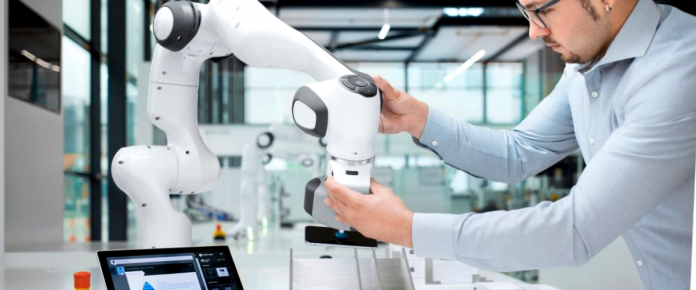Collaborative robots are the new robots in industrial complexes. These are robots that do not need to be kept away from the factory floor. They work comfortably and safely with the rest of the employees. They are an extra hand at the factory floor. In fact, the fastest and most effective hand at the floor.
Being robots, cobots, as they are popularly known can perform multiple tasks within the factory. To do this, they need to be properly trained. They are taught how to perform tasks that are assigned to them in the factory and how to do them well.
They are very easy to train. This is one fact why their popularity has soared. In addition, any employee with a little training can easily handle the cobot, training and operating.
So, how do you train a machine to work.
Easy programming
One way to train methods of how to complete production processes is through programming. One big advantage of programming cobots is that it is simple. It does not require the factory to hire an expensive and exclusive robot programmer.
Programming a cobot from Universal Robots is as simple as writing a step-by-step guide on how to go about accomplishing a specific task to produce a product or make it better.
Since this is an easy process, the company does not need to hire a robot programmer.
Manually
The second option to train a collaborative robot is manual training. This means that you can physically run the cobot through the motions of the task. It will then remember the motions that you showed to it and it will repeat them when the time comes for the actual tasks.
When training the cobot to pick and place products, the cobot operator will hold it by the arm, direct it to the place it should pick and then direct it to the final location where it will release the product. When the cobot operator switches the robot to automatic, it will remember the motions and will complete the task as it has been trained.
Through Artificial Intelligence
With advancements in technology, cobots will soon train themselves through artificial intelligence and machine learning on how to carry out and complete tasks on the factory floor.
Cobots will easily access the internet and watch videos of how tasks are completed. After a short while, they will easily apply their new skills to complete tasks more efficiently, faster and better than the humans it was watching.
Through artificial intelligence, cobots will be able to fix errors observed during a training or actual production process automatically.
Through collaboration with other cobots
With the advancements in technology, cobots will easily collaborate with other robots. The experienced robots will easily teach new ones how to complete their part in the production process.
This will lead to a new era in production, where factories will not need any human beings to work in them. The robots will easily complete the production process as they are monitored remotely.
Challenges in cobot training
Cobot training is not an easy task and there are certain challenges that cobot owners face. Some of these challenges include;
Lack of technical knowledge
To train a cobot on how to do its work, the trainer needs to first know how to use the cobot. For most cobot acquiring companies, the first cobot they acquire is the first that their employees have seen. Therefore, they have no prior experience dealing with a cobot.
This challenge can be overcome through simple training. The cobot manufacturer for example Universal Robots, trains the employee who will be charged with the task of operating the cobot. They are taught how to teach the cobot to work.
Technological challenges
Technology is advancing quite fast. This will pose a challenge to cobot operators who are not aware of the technology that the cobots use to learn and accept instructions into their system.

